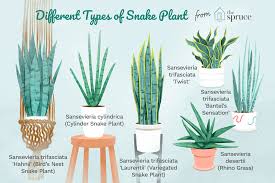💚 The Ultimate Guide to the Mother-in-Law Plant: Benefits, Care, and Tips for Thriving Indoors 💚
Introduction
The Mother-in-Law Plant, also known as the Snake Plant or Sansevieria trifasciata, has become a favorite among plant lovers for its striking appearance and exceptional resilience. This low-maintenance plant, native to West Africa, is cherished for its upright, sword-like leaves and its ability to thrive in a variety of environments. Whether you’re a seasoned gardener or a beginner seeking an easy-to-care-for houseplant, the Mother-in-Law Plant is a perfect choice. In this article, we explore the unique features, benefits, care tips, and common concerns related to this popular plant.
Distinctive Appearance and Varieties
The Mother-in-Law Plant is instantly recognizable by its tall, rigid leaves that grow vertically from the base. These leaves are typically green with grayish or yellow variegation, making them visually appealing in any space. There are several popular varieties, including the classic Sansevieria trifasciata, the shorter and more compact Sansevieria hahniid, and the elegant Sansevieria cylindrical, known for its rounded, tubular leaves. This diversity allows plant enthusiasts to choose the type that best suits their home or office environment.
Benefits of Having a Mother-in-Law Plant
One of the most notable benefits of the Mother-in-Law Plant is its air-purifying ability. NASA’s Clean Air Study identified it as one of the top plants for removing toxins such as formaldehyde, benzene, and xylene from indoor air. Additionally, it is known for releasing oxygen at night, which makes it a great addition to bedrooms for improved air quality. Beyond its health benefits, the plant also serves as a natural decorative element, adding a touch of greenery and modern style to any room.
Easy Care and Maintenance
What sets the Mother-in-Law Plant apart is its remarkable hardiness. It can tolerate low light conditions, infrequent watering, and even neglect. This makes it an ideal choice for busy individuals or those new to plant care. For best results, place the plant in indirect sunlight and allow the soil to dry completely between watering. Overwatering is one of the few issues that can harm the plant, potentially leading to root rot. The plant also thrives in various temperatures, although it should be kept away from drafts and freezing conditions.
Common Issues and Solutions
While generally pest-resistant, the Mother-in-Law Plant can occasionally attract spider mites or mealybugs. These can be treated with insecticidal soap or by wiping the leaves with a damp cloth. Yellowing leaves often indicate overwatering, while curling leaves may be a sign of low humidity or cold exposure. By monitoring your plant’s condition and adjusting its care routine accordingly, you can maintain its health and beauty for many years.
Conclusion
The Mother-in-Law Plant is more than just a stylish houseplant—it’s a resilient, air-purifying companion that requires minimal effort to thrive. Its elegant structure, variety of species, and numerous health benefits make it a valuable addition to any indoor space. With just a bit of care and attention, this plant can flourish and bring life to your home or workspace year-round.




